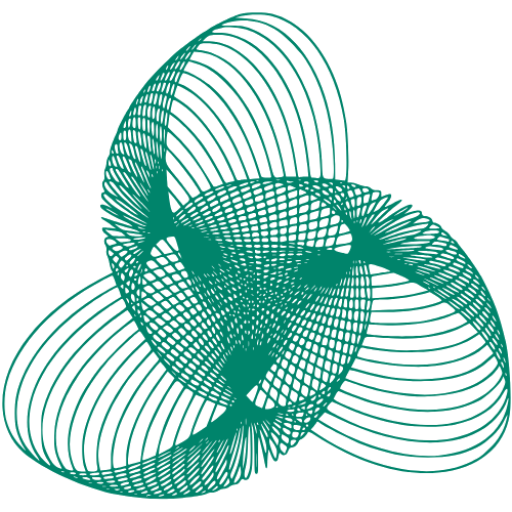Have you ever asked yourself what the universe looked like when it was a baby? Or out there planets out there with the right conditions for life?
The James Webb Space Telescope (JWST) is currently helping scientists unravel these heart-warming questions.
Conceived as a team effort between the European Space Agency (ESA), the Canadian Space Agency (CSA), and NASA, this spectacular cosmic instrument is transforming our mode of knowing about our cosmos.
It’s not another telescope, it’s the most powerful eye that any of us has ever aimed at the stars.
Peering into the Universe’s Earliest Moments
Think about this: Because it can see back into the age of the universe to 290 million years, JWST can view galaxies. It all probably sounds very old-fashioned, but, in cosmic terms, that’s virtually the dawn of the universe as a newborn!
What’s insane is that these observations are forcing scientists to rewrite the textbooks. We thought previously that galaxies could take billions of years for gradual formation, but JWST is changing that paradigm.
The idea that galaxies sort of began significantly before we thought, and that they were enormously bigger than we thought, is no longer a fantasy.
The telescope is designed to be able to detect infrared light through which it is able to view things the Hubble telescope couldn’t.
This will enable it to see in and through cosmic dust clouds that normally prevent us from seeing more distant objects. It’s as though we saw through fog and could see things we couldn’t see.
Maybe you are asking how this affects you. Well, these revelations are changing the way we look at where we came from, and how the building blocks of everything around you, the atom in your body, even came to be.
Unveiling the Growth of Supermassive Black Holes
Ever since we first learned about them, black holes have caught our imagination, but JWST takes us to a new level. A few months ago identified a huge black hole that was only 470 million years old following the Big Bang.
That finding is blowing the minds of scientists. Why? Seeing as we used to believe that supermassive black holes require tens of billions of years to reach huge proportions.
You know what? Indeed, they were expanding at a far greater speed than any guy on earth assumed in the first universe.
With its special tool, the Near-Infrared Spectrograph (NIRSpec), the JWST has shown that huge black holes were already active in young galaxies when the Universe was just starting. It’s like expecting to find a baby but discovering a fully grown adult instead.
It looks like the way these black holes interact with their galaxies is important. Scientists now think the energy from these black holes might help explain how the first galaxies were formed.
Advancing Our Understanding of Galaxy Formation
The tiny constituents of planets and stars, small carbon-rich dust grains, were circulating 10 times earlier than previously thought. JWST detected these cosmic dust particles in galaxies formed one billion years after the Big Bang.
What does this matter to you? Since these were the basic building pieces, so to speak, from which everything from stars to planets, and finally, life, was eventually built.
JWST’s mid-infrared instrument (MIRI) is ideal for detecting these dust particles. It investigates certain wavelengths of absorbed and emitted light lines from different material objects, with which astronomers can measure the composition of remote galaxies with previously unheard-of accuracy.
Before JWST, we couldn’t notice these details. This discovery indicates that the cosmos was preparing the elements for planets like Earth much earlier than previously thought.
The timetable of cosmic development has just received a significant upgrade, prompting us to reconsider when the prerequisites for life may have first arisen in the cosmos.
Exploring Exoplanetary Atmospheres
The James Webb Space Telescope isn’t just looking at faraway galaxies. It’s also studying planets around other stars, called exoplanets. What it’s finding might change how you see our place in the universe.
For example, it found that the atmosphere of a planet called K2-18 b, which is 120 light-years away, has methane and carbon dioxide.
Why should you care? Since these chemicals, together with indications of a water-covered surface, are precisely our search criteria for potentially habitable worlds.
These are the biomarkers – molecules connected with life as we know it – so exciting to detect. Although we haven’t found aliens (yet!), locating these compounds means that some of the fundamental ingredients for life may also be more plentiful than we had assumed.
If you’ve ever looked at the sky and wondered if anybody was looking back, JWST is getting us closer than ever to answering that question. Future measurements will focus on planets that are more comparable to Earth, which might show if we have cosmic neighbors.
Investigating Planetary Phenomena Within Our Solar System
Our cosmic backyard isn’t being ignored by JWST either. In 2023, it took magnifying shots of Jupiter’s auroras, blowing scientists away – they’re hundreds of times brighter than the ones observable on planet Earth.
These observations are vital for our understanding of a strong magnetic field and the complicated atmosphere of Jupiter.
You may wonder why this is, but an understanding of how other planets function allows us to identify the things that set our world apart in the solar system.
The telescope has also looked at comets, asteroids, and the mystery moons of the outer planets. Its infrared vision allows astronomers to tell what these objects are made of with remarkable precision.
Ice moons such as Europa and Enceladus are especially interesting because they might possess seas under their frozen crusts, seas which may contain life.
When you look into the heavens, you’re only getting a part of what’s up there. JWST is helping to reveal the secret lives of our cosmic suburbs, painting a bigger picture of the home we live in.
Challenging Existing Cosmological Models
This is when things become interesting. JWST’s findings are so exact that they are compelling scientists to reconsider some of their fundamental assumptions about the cosmos.
For example, there is a continuous disagreement known as the “Hubble tension” over how quickly the universe is expanding.
Diverse measurement methods provide diverse results, which is a major challenge in physics. JWST’s precision observations may eventually resolve this cosmic puzzle.
The readings created on the cosmic microwave background of the afterglow of the Big Bang obtained by the telescope is being used to refine our notions of dark matter and dark energy.
These mysterious bits make up most of the universe, which is about 95% of them, but we don’t know much about them. Most of the universe is made up of stuff we can’t see, and we can’t see it directly.
Why should I care about dark energy or the universe expanding? Well, it may be the case that working these things out may transform how we look at physics and even result in new technologies that could make your life better than you can imagine it yet.
Big scientific breakthroughs often come from solving the biggest mysteries.
Technological Marvels Behind JWST’s Discoveries
At the heart of the James Webb Space Telescope is its large 6.5-meter mirror, fashioned of 18 segments of gold-sputtered beryllium. This big mirror carefully gathers up the infrared light, whereby JWST can view some of the most distant and dim objects in space.
The telescope operates at temperatures of around -233 degrees Celsius (-387 degrees Fahrenheit), which are colder than anything you’ve ever felt on Earth.
Such considerable cooling is essential to avoid interfering with the telescope’s infrared observations due to heat. It is achieved by the use of a massive sunshield the size of a tennis court that blocks the Sun, Earth, and Moon’s heat and light.
JWST’s four main scientific instruments – NIRCam, NIRSpec, MIRI, and FGS/NIRISS – work together like a cosmic detective kit. Each tool has a specific job, from taking high-resolution pictures to analyzing the chemical makeup of distant objects.
Together, they represent the most advanced set of astronomical tools humans have ever sent to space.
Collaborative Scientific Achievements
What I admire in JWST is that it demonstrates what we, humans, can do when we cooperate. This impressive machine took more than two decades of the work of scientists and engineers from more than 14 countries. It’s truly a global achievement.
JWST’s time is under intense observational pressure, and it is distributed via a purely competitive mechanism.
Scientists send proposals that are screened by their potential scientific impact. With this orientation, the telescope is operated to deal with the foremost questions of contemporary astronomy.
The data collected is sent to researchers around the world, helping them work together and make discoveries. This open approach to science has already led to hundreds of research papers being published.
Scientists everywhere study the data and often find new information that helps us better understand what’s happening in space.
When you hear about the JSWT’s findings, you witness the results of one of humanity’s greatest collaborative endeavors – evidence of what we can do as a species if we combine our knowledge and resources for the same goal.
Future Prospects and Ongoing Investigations
JWST’s journey is just beginning. There are grand plans by scientists anticipating future observations that will continually change our comprehension of the cosmos.
These are further studies of exoplanet atmospheres, complete surveys of galaxies through cosmic time, and exploration of the cosmic epoch that was ignited by the very first stars and galaxies (when these first erupted upon the dark universe).
The telescope is to work for at least 10 years, provided that the fuel reserves allow it. During that time, JWST will keep exploring the limitations of our knowledge, answering long-standing queries, and inevitably creating new ones.
Some of the most fascinating things in the universe will be the subject of future observation programs. These include possibly habitable exoplanets, primordial black holes, and the enigmatic dark matter halos that encircle galaxies.
All results contribute to the improvement of further results, making a more elaborate picture of the history and structure of our universe.
Conclusion
The James Webb Space Telescope has changed how we think about the beginning of the universe.
By studying ancient galaxies, black holes, exoplanet atmospheres, and other space objects, it’s giving us new clues that challenge old theories and lead to new discoveries.
As the telescope continues its mission, it will keep revealing more secrets of the universe, helping us better understand where we are in it.
The discoveries made by the JWST not only help us learn more about science but also inspire wonder and curiosity about the vast space we live in.
When you look up at the night sky, you’re seeing it in a new way, thanks to the incredible discoveries from this powerful telescope.
The James Webb Space Telescope is part of humanity’s ongoing desire to understand where we come from and the nature of the universe we live in.

